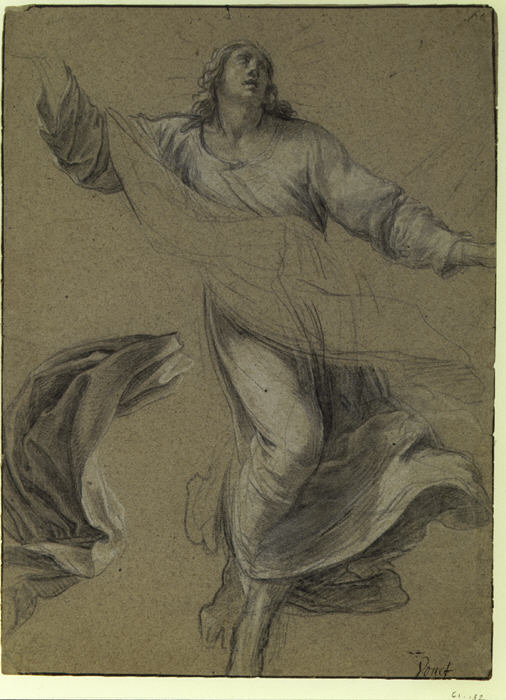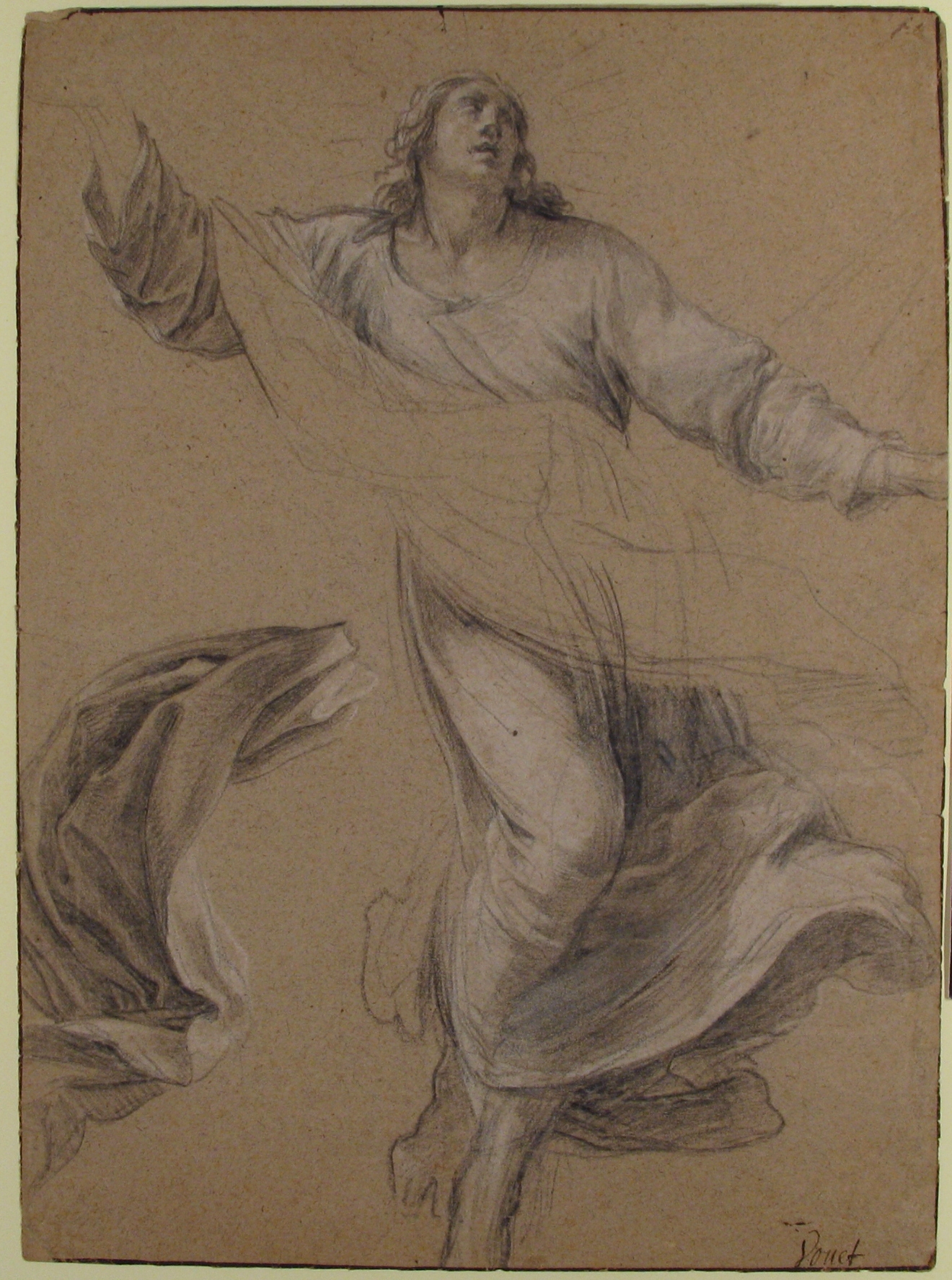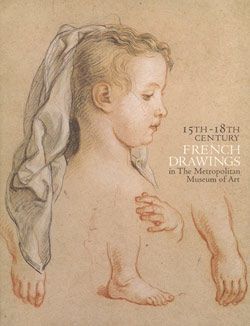St. Louis in Glory
Simon Vouet French
Not on view
After a trip to Venice from 1612 to 1614 where he discovered the color of Veronese and Titian, Simon Vouet spent the following fourteen years in Rome where he absorbed the lessons of Caravaggio and Annibale Carracci. To the latter he certainly owed his taste for the study of human figure. After fulfilling prestigious commissions for a number of Roman churches, Vouet was called back to Paris by Louis XIII in 1627 and was named First Painter to the king. By the late 1630s, at the height of his career, Vouet was inundated with commissions, ranging from altarpieces and décors for Parisian churches to paintings and tapestry cartoons for royal residences and private mansions. While many of these décors have disappeared, the two he painted for the immense altarpiece of the Jesuits’ church Saint-Louis in Paris (known today as Saint-Paul-Saint-Louis) have survived.
This draped figure is a study for the Apotheosis of Saint Louis (preserved in the Musée des Beaux-Arts de Rouen), a picture which once decorated this altar. It was hung just above a Presentation to the Temple, today in the collections of the Musée du Louvre. Like the two paintings, this drawing seems to have been executed ca. 1640-1641. The entire altarpiece (including the architecture and the sculptures) is only known by the 1643 engraving by Edme Moreau for an album devoted to the Jesuit church. In 1664, François Tortebat engraved the painting of the Apotheosis of Saint Louis. This composition became the model for tapestries, including one preserved in the refectory of the Antiquaille de Lyon.
This dynamic sheet belongs to the privileged period in the artist career when his figure studies were distinguished by an amplitude of form, a suppleness of modeling, and carefully rendered nuances of light. Combining a black chalk carelessly hatched and heightened with a delicate white chalk on beige paper, this study showcases Vouet’s baroque manner, in both the virtuosity of its composition as well as its decorative style and sense of movement. Characteristic also of Vouet’s graphic style are the refined play of curves and reverse curves, the elongated fingers, and the elegance of the light that illuminates the saint and suggests his holiness.
Saint Louis, caught in motion, with his forward knee raised to suggest depth and highlighting the turning movement of his body, is depicted with a great sense of immediacy. In the lower left quadrant, a separate study of a detail of the drapery appears to burst into the viewer’s space. Adding to the appeal of the sheet is the delicate balance between the described and the suggested, as shown by the unshaded space left in the middle section of the drapery, producing a billowing effect. As for the facial features, they remain somewhat indeterminate while in the painting they appear more marked, the saint looking older and more virile, even though his feminine attitude has been pointed out in the XVIIth century by Parisian historian Henri Sauval. This drawing is compelling both for its aesthetic appeal and for the insight it offers into the artist’s working methods.
Due to rights restrictions, this image cannot be enlarged, viewed at full screen, or downloaded.
This artwork is meant to be viewed from right to left. Scroll left to view more.








